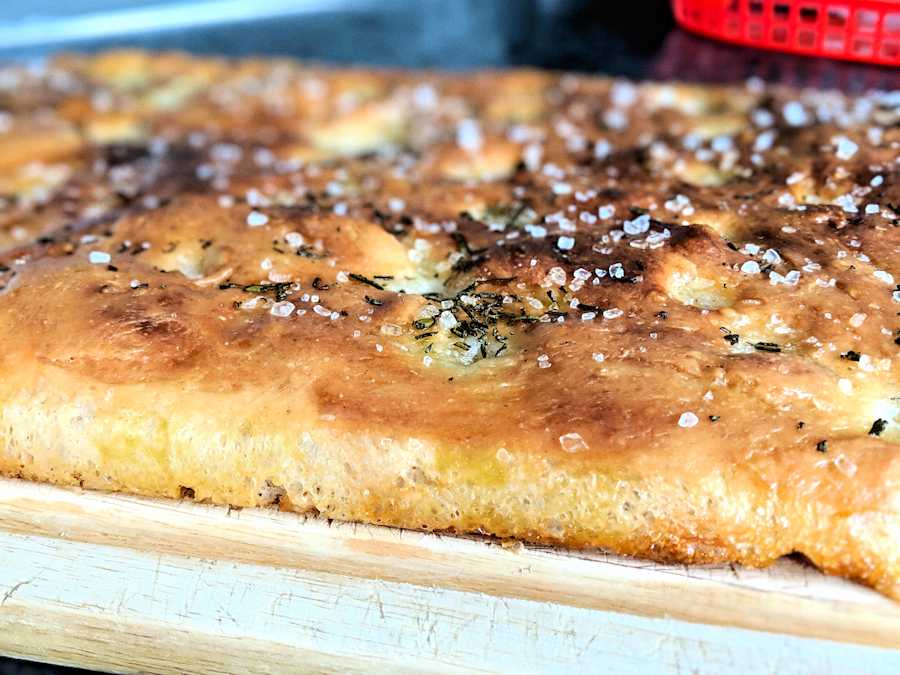Focaccia is the best bread, even when plain or just sprinkled with rosemary. The classic Italian bread is an easy dough to make and whether it has sun dried tomato, anchovy or cheese topping, or simply rosemary and salt flakes, it is incredible.

My first focaccias were the flattish greasy bread rolls with unnecessary rosemary on top that I used to buy for lunch in the sandwich shop across the road. I would have them filled with salt beef, gherkin and Emmental cheese – what multicultural sandwiches I used to eat!
I must have had some at least once or twice on my several visits to Italy but I was probably generally so blown away by food that I didn’t focus on a lesser issue of bread. That’s what focaccia is: the staple of, foremost northern, Italy. The English think of ciabatta as a byword for Italian bread but ciabatta is only ever a failed focaccia, neglected at stretching, skimped on oil and un-dimpled.
Before I tackled this beauty I’d made a twisted, sweetened focaccia with blueberries; I’d baked fougasse, focaccia’s French cousin and I’d baked several ciabattas. A few times I’d also poked leftover pizza dough with my fingers, drizzled with a few drops of olive oil and thought I’d created focaccia - but I was foolishly wrong.
Focaccia is possibly the best bread in the world. It is versatile as far as toppings go so you can get a different flavour every time. It’s easy to make, no food processor is needed and about as labour intensive as picking your nose. Even the pernickety sourdough aficionados might be persuaded: look, there’s 3 grams of fresh yeast or a pinch of instant yeast in the dough. It ferments slowly overnight so the bulk of the rise is done by wild yeast – the baker’s stuff is there only to give them an initial nudge. Focaccia is irresistible warm and almost as good after a couple of days thanks to all this oil. Also thanks to that it makes butter superfluous thus making it spectacularly permissible to gorge on, caloriewise.

This is proper Ligurian (aka the best and authentic) recipe that featured in Samin Nosrat’s Salt, Fat, Acid, Heat Netflix series; with Diego the focaccia maestro doing the kneading, dimpling and brining. I don’t know what I fell in love with first: the bread or the spectacular Ligurian scenery (it was the bread). I cut the amounts down here as in the original, after the Italian fashion, they make enough for a village. I’ve made it several times trying to meet the challenge of textbook dimples but I’m still striving. But the thickness is right – according to Diego, Ligurian focaccia shouldn’t be thicker than about an inch. Phew.